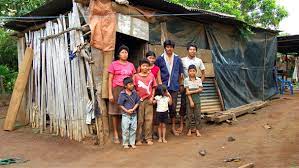In high-income Panama one in three kids live in poverty – UNICEF

The United Nations Children’s Fund (Unicef) said Tuesday that in Panama “too many” children “face difficulties in developing their full potential and for the full guarantee of their rights.”
“We are failing each of these children,” warned UNICEF’s regional director for Latin America, Garry Conille, during a visit to indigenous towns located on the Panama-Colombia border area.
The UN entity indicated in a public statement that “despite being a high-income country according to the World Bank, in Panama one in three boys and girls lives in multidimensional poverty.
This situation is “even more evident among children and adolescents in indigenous, rural areas percentage of children and adolescents in multidimensional poverty in the country (59%), which means that at least 6 out of 10 children, girls and adolescents live with fundamental deficiencies.
He also visited the Emberá-Wounaan indigenous region, where 8 out of 10 children grow up in multidimensional poverty, according to Unicef data.
“The exuberance of the Darien jungle contrasts with the needs faced by children and their families,” said Conille.
In indigenous areas, added the UNICEF representative in Panama, Sandie Blanchet, “boys and girls cannot access the necessary health controls or quality education.”
“Nutrition and water and sanitation services are a challenge” in the indigenous areas of Panama, and “at the same time, these children and adolescents may be more exposed to situations of violence and are at greater risk of suffering abuse and exploitation,” Blanchet said.
Unicef recalled that the border area with Colombia “has historically been one where communities, mainly indigenous, have lived with many deficiencies in access to health, education, water, and protection services.”
Added to the above is the fact that “for a few years, the border area of Panama and Colombia has been impacted by the passage of migrants in transit, who also urgently require services to save lives.”
“These structural gaps affect the development and guarantee of children’s rights,” said Unicef.





